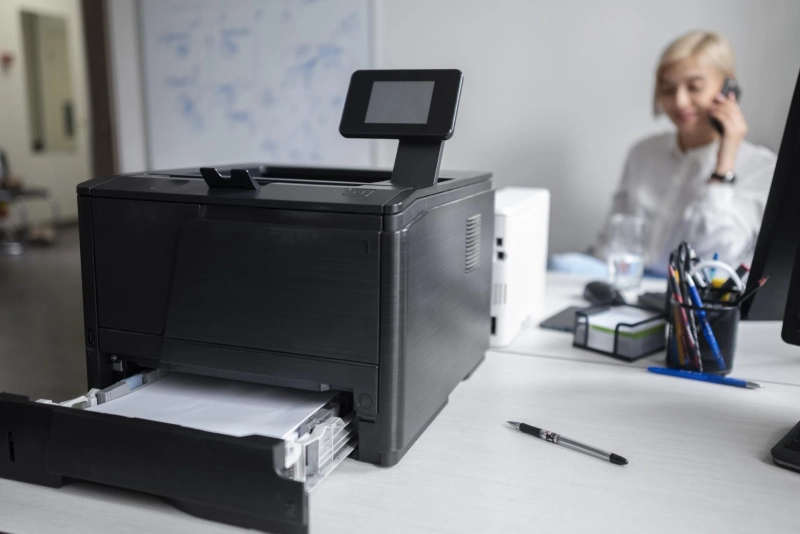Selecting between a business printer and a home printer stands as the primary selection you must pursue during printer shopping. Both printers share basic functions since they print documents while connecting to other equipment, yet performing such functions seems similar on initial examination. Different needs drive the design of business printers and home printers, although they share some apparent functions. The following discussion will elucidate the essential variations between commercial printers and domestic printers to assist your printer purchase decision.

1. Performance and Speed
Business printers are built for high-volume printing. They’re designed to handle dozens, even hundreds, of pages each day without slowing down. These machines offer faster print speeds, often exceeding 20-30 pages per minute, making them ideal for busy office environments where time is money.
In contrast, home printers are typically slower. They’re fine for occasional printing, such as schoolwork or personal documents but struggle to keep up in a professional setting where multiple users may need to print at once.
2. Print Quality and Features
While both business and home printers offer quality printing, business printers tend to provide more consistent results at high speeds, especially for text-heavy documents. Many business printers also support advanced features like duplex (double-sided) printing, scanning, copying, and faxing—all in one machine.
Home printers, on the other hand, often focus more on photo printing or casual use. They may not include all the advanced features found in business models and could fall short when it comes to handling bulk jobs or multiple paper types.
3. Durability and Duty Cycle
One major difference lies in durability. Business printers are designed to last longer and endure frequent use. They come with a higher monthly duty cycle—meaning they can reliably handle thousands of pages per month without issues.
Home printers usually have a lower duty cycle, which means overusing them can lead to breakdowns or increased maintenance costs. If you’re printing frequently, a business printer is a more reliable investment.
4. Connectivity and Integration
Business printers offer better connectivity options. They often include wireless printing, cloud integration, secure mobile printing, and even remote management capabilities. These features are essential for companies operating in hybrid or remote work environments.
Home printers may offer Wi-Fi or USB connections, but they often lack the advanced networking and security features found in business printers.
5. Cost Considerations
At first, home printers appear more affordable. But when you consider long-term costs like ink usage, maintenance, and speed, business printers often offer better value. They usually come with high-capacity ink or toner cartridges and are more cost-efficient per page.
A low-cost home printer might end up costing more in ink replacements and repairs if used beyond its intended capacity.
So, Which One Should You Choose?
If you're running a business, managing a team, or even working remotely with regular printing needs, a business printer is the clear choice. It’s designed to support your workflow, save you time, and offer better long-term value.
On the other hand, if your printing needs are minimal- say, a few pages a week then a home printer will do the job just fine.
Conclusion
Understanding the difference between business printers and home printers can help you make a smarter investment. At MBE Ireland, we stock a wide range of reliable, high-performance business printers that meet the needs of modern workplaces. Whether you need a multifunction device for a growing team or a robust machine for bulk printing, we’ve got you covered.


